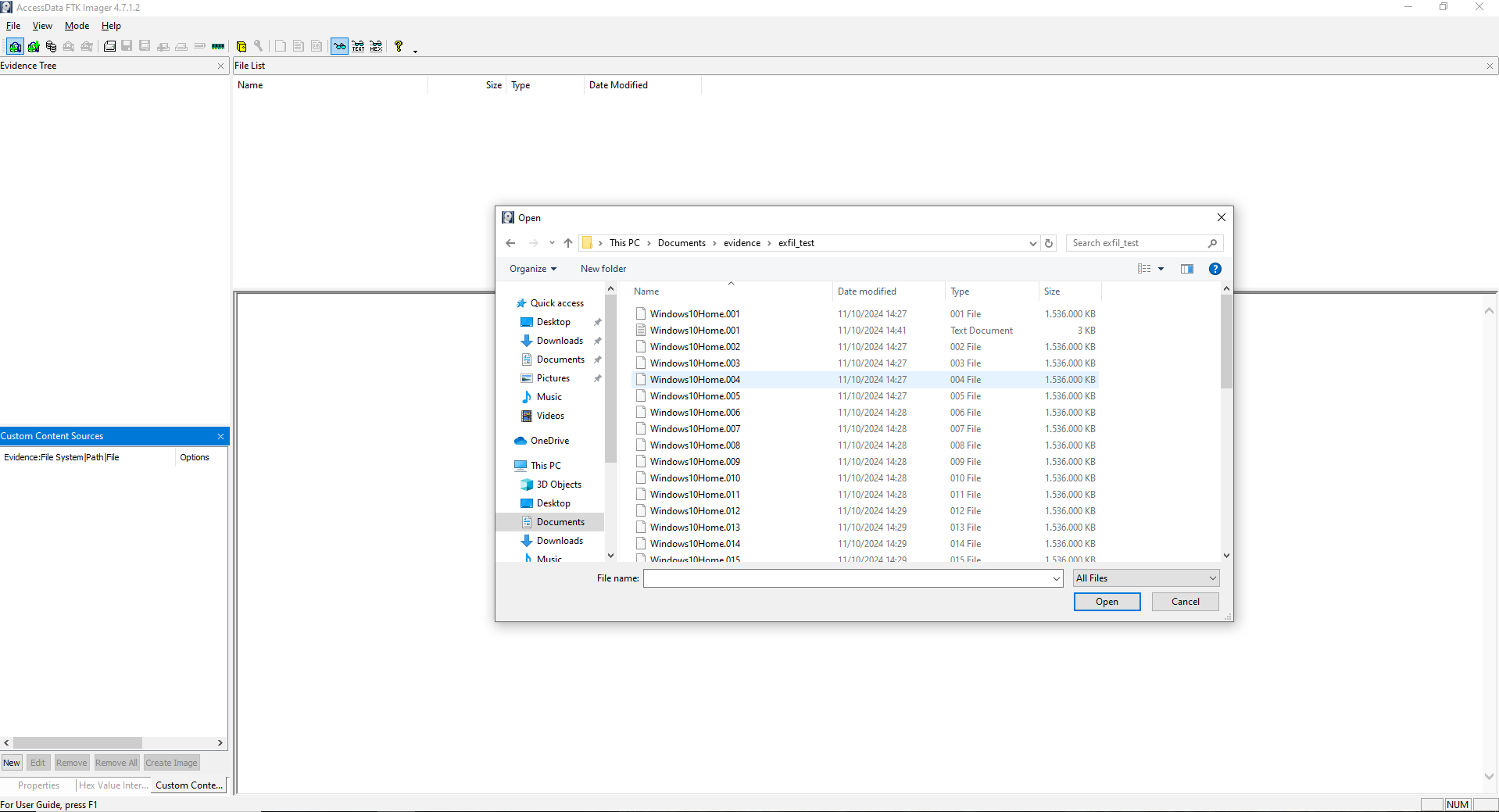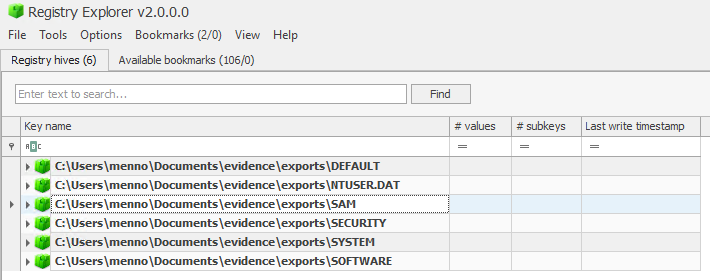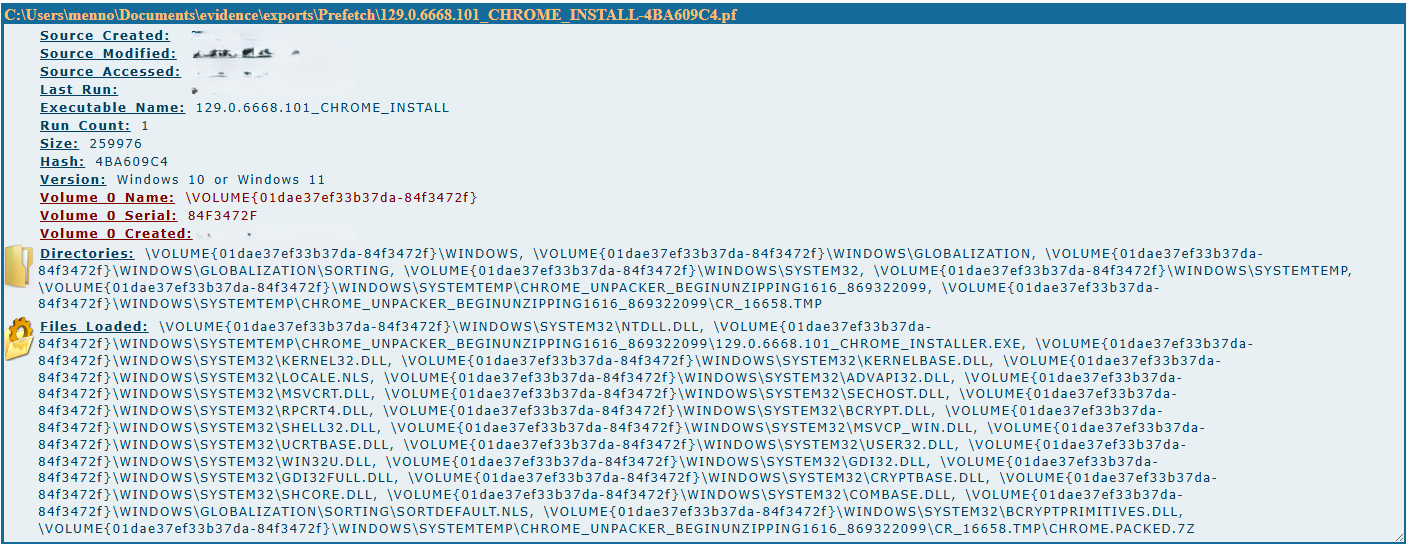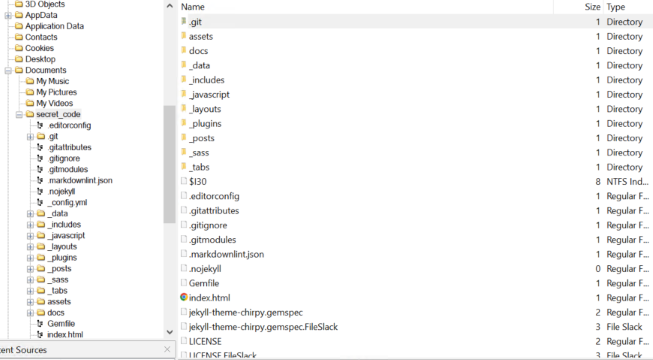Data Exfiltration via Git: A Forensic Investigation. Part 2, Investigation
In part 1 of this blog data was exfiltrated from a workstation to GitHub using Git. In part 2, we’ll dive into investigating the data on a Windows 10 workstation to determine whether any sensitive data was exfiltrated to GitHub using Git. The investigation focuses on analyzing traces left on the device, excluding network activity logs.
Investigation Scope
For this investigation I will focus on the data on the Windows 10 device itself, excluding other sources like network activity logs.
The goal is to determine whether sensitive data had been sent from the device to GitHub using Git. The investigation revolves around key questions:
- Was Git installed on the device?
- Was Git executed on the device?
- Were there traces of data being sent to GitHub?
- If so, what data was sent, and to which repository?
I will use these questions as structure in this post.
Acquiring the Disk Image
To begin the investigation, I used FTK Imager to capture the virtual machine’s disk image, and transferred the image to a separate Windows 10 virtual machine for analysis. There I copied the image to ensure that the original data remained unaltered, preserving its forensic integrity.
On this investigation VM, I loaded the copy in FTK:  Fig.1 FTK
Fig.1 FTK
To have a starting point I exported the registry files from this image. From %SystemRoot%\system32\config\ the DEFALT, SAM, SECURITY, SYSTEM and SOFTWARE registry files. And from the <user folder>\ the NTUSER.DAT registry file.
After exporting I uploaded the hives in Registry Explorer.
General System Information
To start the investigation I first investigated the device itself to determine the type, OS, general configurations and user accounts on the device.
Device information
From the system’s registry, I retrieved the following information:
- Device name: “DESKTOP-2D85SP7”
- Operating system: Windows 10 Home, version 22H2
- Timezone: Pacific Standard Time (UTC-7)
- User accounts: Default accounts and a user account named “menno.”
Device name
In SYSTEM\CurrentControlSet\Control\ComputerName\ComputerName the device name was set to “DESKTOP-2D85SP7”.
Operating system
In the subkey SOFTWARE\Microsoft\Windows NT\CurrentVersion the following values where stored:
- ProductName: Windows 10 Home
- DisplayVersion: 22H2
- InstallDate: 1722450503 == Wed Jul 31 2024 18:28:23 GMT+0000
- SystemRoot: C:\Windows
- RegisteredOwner: Menno
Timezone
In SYSTEM\CurrentControlSet\Control\TimeZoneInformation I found information regarding the timezone setting of this device. This could later help to translate possible timestamps:
- The
TimeZoneKeyNamesubkey was set toPacific Standard Time - The ActiveTimeBias (the number of minutes offset from UTC) was 420. 420 divided by 60 gives an offset of 7, or UTC-7.
- The value of DaylightName was -211, translating to Pacific Standard Time.
Users accounts
In the SAM\Users\Names (Security Account Manager) registry five accounts where present, four default accounts and one user account:
- Administrator
- DefaultAccount
- Guest
- menno
- WDAGUtilityAccount
Looking at the user account that was laslty used to login: SOFTWARE\Microsoft\CurrentVersion\Authentication\LogonUI
- LastLoggedOnUser: menno
Was Git installed?
To determine if GitHub was installed on this device I searched for traces related to this program. First I checked the SOFTWARE hive and found that GitHub was, indeed, installed. Software\GitForWindows
- CurrentVersion: 2.47.0
- InstallPath: C:\Program Files\Git
To find how GitHub was used I searched the NTUSER.DAT registry. In the console subkey I found the values, indicating that Git could be used via the command interpreter. NTUSER.DAT\Console\Git Bash NTUSER.DAT\Console\Git CMD
In the SYSTEM hive I looked for the values stored in PATH, and also found Git cmd: SYSTEM\CurrentControlSet\Control\Session Manager\Environment
- path:
%SystemRoot%\system32;%SystemRoot%;%SystemRoot%\System32\Wbem;%SYSTEMROOT%\System32\WindowsPowerShell\v1.0\;%SYSTEMROOT%\System32\OpenSSH\;C:\Program Files\Git\cmd
However, no SSH keys were present at the time of the investigation for this user account: NTUSER.DAT\Software\OpenSSH\Agent was empty.
Browser history
Git for Windows can be downloaded via the browser, and the browser history can be viewed.
For Chrome this file was located in C:\Users\menno\AppData\Local\Google\Chrome\User Data\Default\. After locating the file in FTK I exported it, and viewed in DB Browser. In the database I filtered for git, and found a Google search git windows, an URL https://git-scm.com/downloads/win and a reference to a file ///C:/Program%20Files/Git/ReleaseNotes.html.
There where no other browsers on this system.
Conclusion
Based on this we can conclude that git was downloaded by user account menno via Chrome, and was installed on this system.
Was Git executed?
For this second question I looked for the Git Configuration and history Files in FTK. The installation folder C:\Program Files\Git and installer C:\Users\menno\Downloads\Git.2.47.0-64-bit.exe where in the filesystem.
The configuration file for git is placed in the user folder. This file could contains the configurations for the user, like username and remote repositories. While the file was present on this system, it only contained user settings.
C:\Users\menno\.gitconfig
1
2
3
[user]
name = <username>
email = <email@address.com>
The sub-key C:\Users\menno\AppData\Local\Temp didn’t provide relevant data.
Windows Firewall
The Windows Firewall could hold information regarding network traffic and connections, if network logging is enabled. However C:\Windows\System32\LogFiles\Firewall was empty, meaning network logging was disabled.
Application Event Logs
Switching to the data in the Application Event Logs. These are stored in C:\Windows\System32\winevt\Logs. Via FTK I exported the logs, and processed theme with Eric Zimmermans EvtxeCmd: EvtxECmd -d "C:\Users\menno\Documents\evidence\exports\Logs" --csv "C:\Users\menno\Documents\evidence\exports\logs-export". In the csv file there where multiple entries for git.exe.
Traces of Program execution
The Amcache stores information about program executions on an Windows system, and is located in C:\Windows\AppCompat\Programs\Amcache.hve.
After exporting the Amcache file, I processed it with Eric Zimmermans AmcacheParser: AmcacheParser -f "C:\Users\menno\Documents\evidence\exports\Amcache.hve" -i --csv "C:\Users\menno\Documents\evidence\exports\Amcache" In this csv where also multiple entries who showed that the application Git.exe was executed on this system.
Conclusion
Based on the traces in the Application Event Logs and the Amcache we can conclude that git was executed on this system using the menno user account.
Was data sent to GitHub?
After reviewing the Amcache data in the csv file that AmcacheParser produced I found entries for the application git-http-push.exe. This application is used bij GIT to push data to a remote repository.
Git,000037ead7a90e1a0d39d6b8c02d404364ca0000ffff,2024-10-11 10:44:46,92b181ef6f8562f30995989dd8a9f1ca2b6cd05e,False,c:\program files\git\mingw64\libexec\git-core\git-http-push.exe,git-http-push.exe,.exe,2024-10-08 08:53:55,git,2492296,2.47.0.windows.1,2.47.0.windows.1,git-http-push.ex|68d3cf7d040e7329,pe64_amd64,False,2.47.0.1,2.47.0.1,510571216,1033,
Conclusion
The application git-http-push.exe was executed on this system, indicating that most likely data was sent to a remote repository, or an attempted was made to do so.
To which repository was data sent?
Besides the Amcache, the Prefetch files could also contain information about program execution on a Windows system. These files are located in C:\Windows\Prefetch. After locating these in FTK, and exporting the folder I processed the files using Eric Zimmermans PECmd: PECmd -d "C:\Users\menno\Documents\evidence\exports\Prefetch" --html "C:\Users\menno\Documents\evidence\exports\pecmd"
As the output I selected html, given the large amount of data this gave a cleaner overview than an csv file, as displayed in figure 3.
Repository
When searching this .html file for entries related to .git I found multiple enties for GIT.exe and related Git commands. These where used from within one folder: \USERS\MENNO\DOCUMENTS\SECRET_CODE\.
In FTK I located this folder:
At the time of acquiring the disk of this device, this folder contained a .git folder and the source code for Jekyll Chirpy Theme.
Using this blog I investigated the .git folder. In FTK I could access the folder, and view the files inside.
The file .git/logs/HEAD is used to track recent commits and pushes by git. In this there was an entry stating commit: data exfiltration.
The .git/config file contains information about the remote repository. After opening
1
2
3
4
5
6
7
8
9
10
11
12
13
[core]
repositoryformatversion = 0
filemode = false
bare = false
logallrefupdates = true
symlinks = false
ignorecase = true
[remote "origin"]
url = https://github.com/mennovanveenendaal/exfiltration_test.git
fetch = +refs/heads/*:refs/remotes/origin/*
[branch "main"]
remote = origin
merge = refs/heads/main
Conclusion
Based on the .git/config file, the configured remote repository for the repository in the folder SECRET_CODE was https://github.com/mennovanveenendaal/exfiltration_test.git.
What data was sent?
At the time of acquiring the disk image the SECRET_CODE folder contained the source code for the Chirpy Theme. However, this could have been changed after data was uploaded.
To investigate the git repository I exported the .git folder and installed Git on my investigation VM.
The file .git/index is “as a sort of temporary staging area, which is filled with a tree which you are in the process of working on.”. With the command git ls-files --stage the filename are shown, not the actual data inside the files.
Using the help command git -h I found that git stores a log off all commits:  Fig.5 Git log
Fig.5 Git log
Adding shortstat gives the stats off all commits.
1
2
3
4
5
6
7
8
> git log --shortstat
commit 2aa4ec40961402ccde72413112d03de52c098de6 (HEAD -> main, origin/main)
Author: mennovanveenendaal <EMAIL>
Date: Fri DATE
data exfiltration
169 files changed, 11648 insertions(+)
As shown here, 169 files changed. The repository contained 198 files, this difference could be due to .gitignore file excluding files from uploading.
To see the data sent during the commits I used the git show command, and stored the results in a text file using >:
1
2
3
4
5
6
7
8
9
10
11
12
13
14
15
16
17
18
19
20
21
22
23
24
25
26
27
28
29
30
31
32
33
> git show > ../git_show.txt 2>&1
> cd ..
> more git_show.txt
commit 2aa4ec40961402ccde72413112d03de52c098de6
Author: mennovanveenendaal <EMAIL>
Date: Fri DATE
data exfiltration
diff --git a/.editorconfig b/.editorconfig
new file mode 100644
index 0000000..2b740bf
--- /dev/null
+++ b/.editorconfig
@@ -0,0 +1,19 @@
+root = true
+
+[*]
+charset = utf-8
+indent_style = space
+indent_size = 2
+trim_trailing_whitespace = true
+# Unix-style newlines with a newline ending every file
+end_of_line = lf
+insert_final_newline = true
+
+[*.{js,css,scss}]
+quote_type = single
+
+[*.{yml,yaml}]
+quote_type = double
+
[...]
All lines starting with a plus sign are lines that where added during this commit. And with that the exfiltrated data is shown.
Conclusion
In commit 2aa…98de6 with comment “data exfiltration” data was found that was most likely sent to the remote repository https://github.com/mennovanveenendaal/exfiltration_test.git.
Closing the investigation
Data from this device was successfully sent to a remote GitHub repository. Evidence of Git execution was found in the Prefetch files, which led to the discovery of the local repository folder and Git log files. These logs revealed the specific commits and the data that was pushed.
The goal of this investigation was to determine if there were traces of data exfiltration to GitHub on a Windows system. The results show that Windows does store information about Git usage, making it possible to track whether Git was used on the device.
While this case focused on a successful data exfiltration, it’s important to consider what logs or evidence might appear if a Git push was blocked or failed. Additionally, had Git been uninstalled or files deleted after the exfiltration, recovery options should be explored, such as using forensic tools to recover deleted files or artifacts.
Recommendations to Prevent Future Data Exfiltration
To prevent similar incidents, companies can implement the following strategies:
- Network-level blocks on Git or GitHub domains.
- Device or network monitoring to detect Git usage or abnormal traffic patterns.
- Enforcing least privilege access to prevent unauthorized installations of software like Git.
This post is also published on blog.jdriven.com



